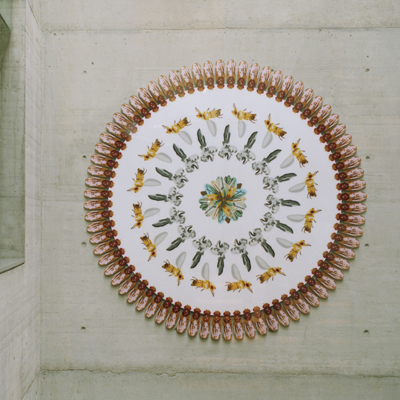Public engagement and outreach are important to IMBA. Beyond the impact of our discoveries on the public, we want everyone to develop an appreciation for science and its broad contributions to society. IMBA fosters multidisciplinary interactions that help us integrate diverse perspectives, consider problems from new angles, and think outside the box. We believe that it is our mission as scientists to convey our knowledge to the public and inspire them. Our goal is to build a learning- and knowledge-based society that recognizes scientific findings as the key to solve our societal issues.
We actively engage in outreach activities, via both the media and individual discussions at information events.
Societal Dialogue
Inquisitiveness, academic freedom, and a pioneer spirit drive most scientists to answer outstanding questions, make unanticipated discoveries, and sometimes even launch new fields of research. The scientific pursuit has enormous potential to improve modern medicine, but biotechnological innovations can lead to unexpected questions and pose new challenges for our society. The IMBA actively engages in societal dialogue, and integrates clinical, sociopolitical, and even theological aspects of the biosciences.
IMBA fosters a dialogue on timely ethical issues like data sharing, biobanking, genome editing, scientific rigor and reproducibility, as well as stem cell and organoid research. In 2017, the IMBA organized the first Bioethics Symposium at the Vienna BioCenter.
Vienna Open Lab
The Vienna Open Lab was initiated by IMBA and “Open Science”, a non-profit organization promoting science education and public dialogue. The hands-on life science laboratory targets groups of any age, ranging from 6 to 99 and offers various workshops for children, teenagers and grown-ups. Young scientists who have been trained as tutors assist the “lab members for a day” in performing a wide range of experiments in the fields of genetics, genetic engineering and biotechnology. Over 65,000 people have visited the Vienna Open Lab since opening in 2006.
Science Festivals
The “Long Night of Research” is the biggest research-related event across Austria where many scientific institutions open their doors to the public. Visitors get the chance to experience hands-on science, brought to them in a playful, entertaining way by the researchers themselves. The public is invited to scientific talks, guided tours, and interesting panel discussions on current topics.
The “Long Night of Research” is a nation-wide event funded by the Federal Ministry of Science, Research and Economy and the Ministry for Transport, Innovation and Technology, and supported by the Federal Ministry of Education and Women’s Affairs.
Further information can be found on the “Long Night of Research” website.
Art and Science are two disciplines that naturally overlap. They are driven by investigation, they test different ideas and theories, and they transform abstract information into something tangible. Scientists and Artists both seek to expose what is not apparent or known.
IMBA promotes synergies between arts and science, and aims bridges these two worlds, which are more connected than we might think.
- Artworks at IMBA
Inspired by science and conversations with IMBA researchers, young art students from the University of Applied Arts in Vienna, including some from the Erwin Wurm master class, designed a total of eighteen projects as part of a competition. Four of these projects have been realized at IMBA and are on exhibition in the Institute building.
- Applied Innovation Lab - AIL
With the establishment of the Applied Innovation Laboratory (AIL), the University of Applied Arts Vienna seized the idea of the 19th century Viennese salon. The place was created to facilitate an open dialogue between people from different disciplines. This exchange among artists, economists and scientists should foster creativity and innovative breakthroughs.
IMBA was among the first partners for the AIL project. The facilities can be used by VBC members for any occasion beyond the lab. Networking with other creative minds in this relaxed surrounding can stimulate inspiring insights and ideas.
The AIL offers an ideal platform for various forms of communication and exchange. It is an ideal setting for exhibitions, lectures, performances and discussions. Moreover, the AIL Lounge offers a place to ponder. Information on the current talks and exhibitions can be found at http://www.ailab.at.
- “Art and Science: Bridging Two Cultures“ - The Eric Kandel Lecture Series
The series “Art and Science: Bridging Two Culture “, a joint project of IMBA and viennacontemporary, was initiated by Josef Penninger, former Scientific Director of IMBA, and Dmitry Aksenov, Chairman of the Board of viennacontemporary. It is named after Nobel Prize Laureate Prof. Eric Kandel, who also held the inaugural lecture.
The series aims to build bridges between the industries of art and science. It offers unique insights into the relationships between art and science, and the possibilities of collaboration between professionals in both fields. Internationally renowned scientists and contemporary artists discuss their ideas in an interdisciplinary setting.
Prof. Eric Kandel held the first lecture of the series in 2017 and presented his concept of Reductionism in Art and Brain Science. He demonstrated how science can inform the way we experience a work of art and seek to understand its meaning, and illustrated how reductionism, the distillation of larger scientific or aesthetic concepts into smaller, more tractable components, has been used by scientists and artists alike to pursue their respective truths.
Looking Glass - an arts and science project
Looking Glass - Photographic Essays on the Mechanisms of Life is a publication that resulted from a collaboration between the Institute of Molecular Biotechnology (IMBA) and the University of Applied Arts in Vienna, Austria. The centerpiece of the Book consists of 15 impactful papers in the history of IMBA – and their unique visual interpretations by the young photo-artists. A dialogue between scientist and artist laid the basis for these artworks: Researchers at IMBA, from PhD to PI level, got together with the artist and tried to convey their research - the individual photo essays were then realized as a result of this exchange.




